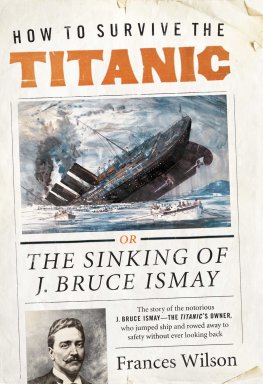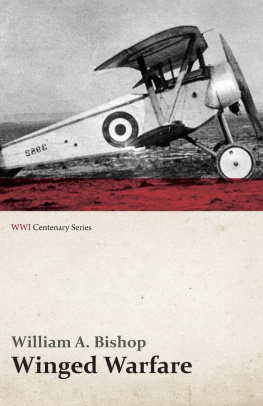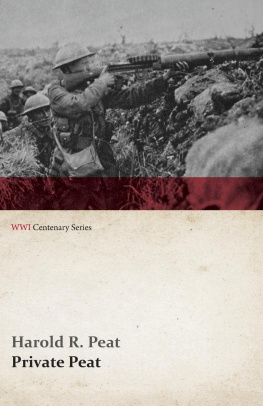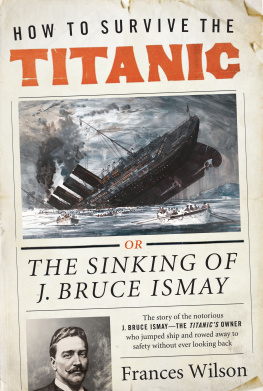WITH THOSE WHO WAIT
BY
FRANCES WILSON HUARD
Author Of My Home In The Field Of Honour,
My Home In The Field Of Mercy, Etc.
With Drawings By Charles Huard
Copyright 2016 Read Books Ltd.
This book is copyright and may not be
reproduced or copied in any way without
the express permission of the publisher in writing
British Library Cataloguing-in-Publication Data
A catalogue record for this book is available from the British Library
Contents
Illustration List
Image 1. British troops resting in support trench
View Of Chateau-Thierry
Monsieur S. Of Soissons With His Gas Mask
A Village On The Front
Door Of Madame Huards HomeParis
View Of St. Gervais From Madame Huards Paris Home (Bombarded By German Super Cannon, April, 1918)
The Courtyard Leading To Madame Huards Cellar
A Courtyard In Montmartre
Monsieur Amd
Flocking To Read The Coming Communiqu In A Little French City
Maxence
Introduction to the World War One Centenary Series
The First World War was a global war centred in Europe that began on 28 July 1914 and lasted until 11 November 1918. More than nine million combatants were killed, a casualty rate exacerbated by the belligerents technological and industrial sophistication and tactical stalemate. It was one of the deadliest conflicts in history, paving the way for major political changes, including revolutions in many of the nations involved. The war drew in all the worlds great economic powers, which were assembled in two opposing alliances: the Allies (based on the Triple Entente of the United Kingdom, France and the Russian Empire) and the Central Powers of Germany and Austria-Hungary. These alliances were both reorganised and expanded as more nations entered the war: Italy, Japan and the United States joined the Allies, and the Ottoman Empire and Bulgaria joined the Central Powers. Ultimately, more than 70 million military personnel were mobilised.
The war was triggered by the assassination of Archduke Franz Ferdinand of Austria, heir to the throne of Austria-Hungary, by a Yugoslav nationalist, Gavrilo Princip in Sarajevo, June 28th 1914. This set off a diplomatic crisis when Austria-Hungary delivered an ultimatum to Serbia, and international alliances were invoked. Within weeks, the major powers were at war and the conflict soon spread around the world. By the end of the war, four major imperial powers; the German, Russian, Austro-Hungarian and Ottoman empiresceased to exist. The map of Europe was redrawn, with several independent nations restored or created. On peace, the League of Nations formed with the aim of preventing any repetition of such an appalling conflict, encouraging cooperation and communication between the newly autonomous nation states. This laudatory pursuit failed spectacularly with the advent of the Second World War however, with new European nationalism and the rise of fascism paving the way for the next global crisis.
This book is part of the World War One Centenary series; creating, collating and reprinting new and old works of poetry, fiction, autobiography and analysis. The series forms a commemorative tribute to mark the passing of one of the worlds bloodiest wars, offering new perspectives on this tragic yet fascinating period of human history.
Amelia Carruthers
A Timeline of the Major Events of World War One in Europe
1914 |
28th June | Franz Ferdinand Assassinated at Sarajevo. |
29th June | Austro-Hungary send despatch to Vienna accusing Serbian complicity in the killing. |
5th July | Kaiser Wilhelm promises German support for Austria against Serbia. |
20th July | Austria-Hungary sends troops to the Serbian frontier. |
25th July | Serbia mobilises its troops, Russia sends troops to the Austrian frontier. |
28th July | Austria-Hungary Declares war on Serbia. |
29th July | Austrians bombard Belgrade and German patrols cross the French border. Britain warns it cannot remain neutral. |
1st August | Germany declares war on Russia. Italy and Belgium announce neutrality. French mobilisation ordered. |
3rd August | Germany declares war on France and invades Belgium (Schlieffen plan). Great Britain mobilises. |
4th August | Britain declares war on Germany and Austria-Hungary (after ultimatum to stand down). US declares neutrality. Germany declares war on Belgium. |
6th August | First British casualties with the HMS Amphion sunk by German mines in the North sea. 150 men dead. |
7th August | First members of the BEF (British Expeditionary Force) arrive in France. |
11th August | Start of enlisting for Kitcheners New Army Your King and Country Need You. |
20th August | Brussels is evacuated as German troops occupy the city. |
23rd August | The BEF started its retreat from Mons. Germany invades France. |
26th August | Russian army defeated at Tannenburg and Masurian Lakes. BEF suffers over 7000 casualties at the Battle of Le Cateau forced to retreat. |
6th September | Battle of the Marne starts; checks German advance, but at the cost of 13,000 British, 250,000 French and 250,000 German casualties. |
19th October | First Battle of Ypres. |
29th October | Turkey enters the war (on Germanys side). |
22nd November | Trenches are now established along the entire Western Front. |
8th December | Battle of the Falkland Islands. |
1915 |
19th January | First Zeppelin raid on Britain (Great Yarmouth and Kings Lynn killing 5). |
18th February | Blockade of Great Britain by German U-boats begins. All vessels considered viable targets, including neutrals. |
22nd April | Second Battle of Ypres begins Widespread use of poison gas by Germany. |
25th April | Allied troops land in Gallipoli. |
2nd May | Austro-German offensive on Galicia begins. |
7th May | The Lusitania is sunk by a German U-Boat creating US/ German diplomatic crisis |
23rd May | Italy declares war on Germany and Austria |
31st May | First Zeppelin raid on London, killing 35 and shaking morale. |
30th June | German troops use flamethrowers for the first time, against the British at Hooge, Ypres. |







